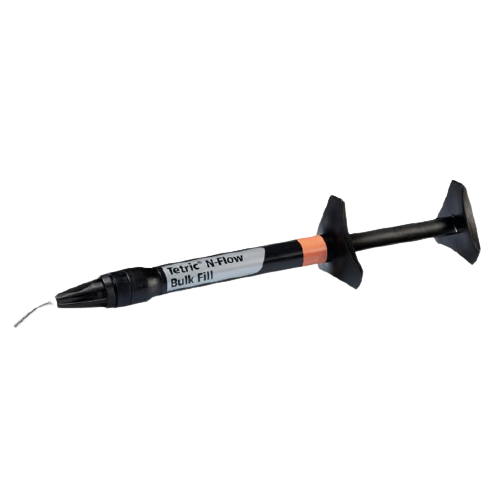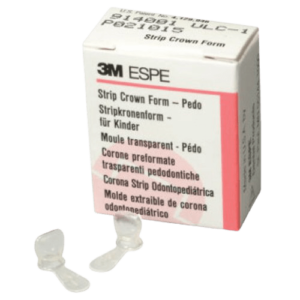TETRIC N CERAMIC BULKFILL IVOCOLAR
FEATURES
- Time-saving due to 4 mm bulk-filling
- More esthetic than other bulk-fill composites. Particularly in cases of discoloured tooth structure
- Ideal in combination with Tetric N-Ceram Bulk Fill and Tetric N-Ceram
Read More
DESCRIPTION
The new flowable composite complements the mouldable Tetric N-Ceram Bulk Fill composite. In essence, Tetric N-Flow Bulk Fill is based on the composition of Tetric N-Ceram Bulk Fill. The material is applied as a bulk-fill base in Class I and Class II restorations. Just like the existing version, it can be light-cured in large increments of up to four millimetres, requiring only short light exposure times. Excellent affinity to cavity walls and self-levelling consistency round off the benefits offered by this volume replacement material.
Aessencio technology
- Another strength of the new composite lies in the Aessencio technology. This technology causes the translucency of the material to decrease from 28% to approx. 10% during polymerization.
Indications
- As initial layer / first increment in Class I and II composite restorations in permanent teeth
- Restorations in deciduous teeth (without capping layer)
KEY SPECIFICATION
Composition
The monomer matrix is composed of monomethacrylates and dimethacrylates (28 wt%). The fillers include barium glass, ytterbium trifluoride and copolymers (71 wt%). Additives, initiators, stabilizers and pigments are additional ingredients (<1.0 wt%). The total content of inorganic fillers is 68.2 wt% / 46.4 vol%. The particle size of the inorganic fillers ranges between 0.1 μm and 30 μm with a mean particle size of 5 μm.
Storage temperature: 2–28 °C
PACKING
DIRECTION TO USE
Application of Tetric N-Flow Bulk Fill
- Tetric N-Flow Bulk Fill can be applied in increments of up to 4 mm thickness.
- Tetric N-Flow Bulk Fill must be covered with a layer of methacrylate based universal or posterior composite (e.g. Tetric N-Ceram/Tetric N-Ceram Bulk Fill/IPS Empress Direct).
- Proximal contacts must be established by means of a matrix system. The filling material does not exert any pressure on the matrix band. The matrix band can be shaped with a suitable hand instrument (e.g. a balltype condenser) before and/or during light-curing.
- Complete polymerization requires a sufficiently long exposure time. For the recommendations regarding exposure time and light intensity see table.
- When using a metal matrix, additionally polymerize the composite material from the buccal or lingual/palatal aspect after removing the matrix, if no Bluephase N polymerization light is used or the light probe cannot be ideally positioned, e.g. distant to composite or diverging scattering angle.
| Unit Programm |
Bluephase N |
Bluephase NM |
Bluephase NMC |
| High Power |
10 s (1200 mW/cm2 ) |
15 s (800 mW/cm2 ) |
15 s (800 mW/cm2 ) |
| Soft Start |
15 s |
—— |
—— |
| Low Power |
20 s (600 mW/cm2 ) |
—— |
—— |
| Light intensity |
Exposure time |
| ≥ 500 mW/cm2 |
20 s |
| ≥ 1‘000 mW/cm2 |
10 s |
Category: Pedodontics Tag: FLOWABLE BULKFILL









Reviews
There are no reviews yet.